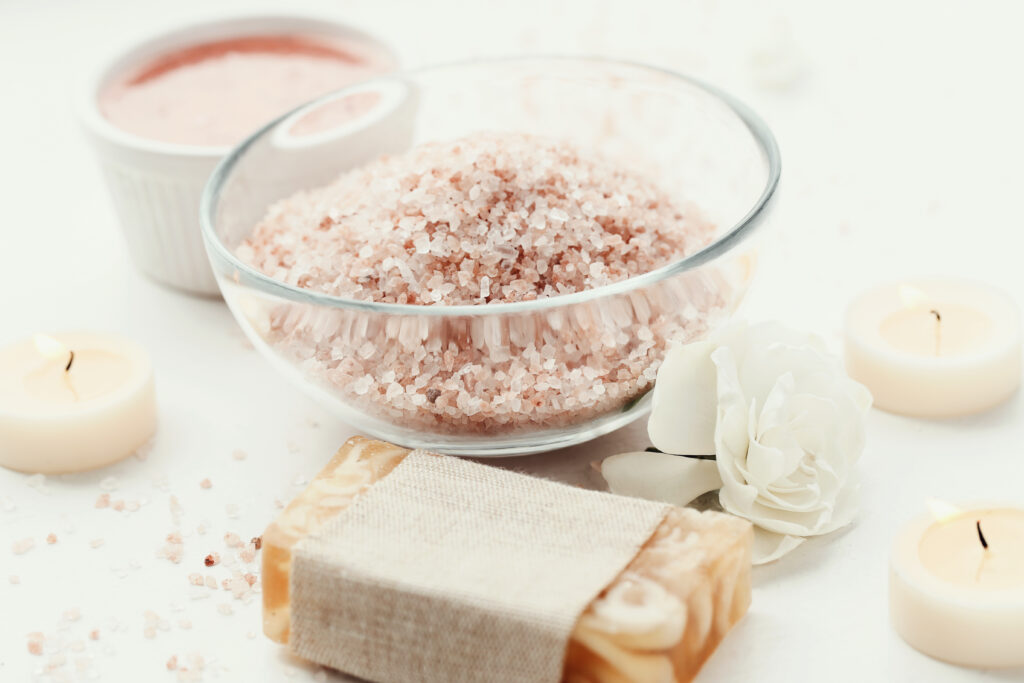In the realm of culinary exploration and nutritional enhancement, the debate between Celtic salt and Himalayan salt has sparked intrigue and curiosity among health-conscious individuals. These two varieties of salt boast distinct origins, mineral compositions, and purported health benefits, igniting a comparison that seeks to uncover the superior choice for enhancing flavor and promoting wellness.
Table of Contents
Celtic salt vs Himalayan salt?

Salt is a fundamental ingredient in cooking, but not all salts are created equal. Among the many varieties available, Celtic salt and Himalayan salt stand out for their unique characteristics and properties. In this article, we’ll delve into the dissimilarities between these two popular salts, exploring their origins, compositions, flavors, nutritional content, and more.
1. Introduction:
Celtic salt and Himalayan salt are both revered for their purity and distinct flavors. While they share similarities in their natural origins, they differ significantly in taste, texture, and mineral content.
2. Origin and Composition:
Origin of Celtic Salt: salt, also known as grey salt or sel gris, hails from the coastal regions of France. It’s harvested using traditional Celtic methods that involve hand raking salt from clay-lined ponds.
Origin of Himalayan Salt: salt originates from the Khewra Salt Mine in Pakistan, nestled in the foothills of the Himalayan Mountains. It’s believed to be millions of years old and is mined from ancient seabeds.
Composition Differences: both salts primarily consist of sodium chloride, Celtic salt typically retains more moisture and contains a higher concentration of trace minerals compared to Himalayan salt.
3. Processing Methods: celtic salt vs himalayan salt
Processing of Celtic Salt: salt undergoes minimal processing, with its unique flavor and color attributed to the clay-lined ponds where it’s harvested. It’s typically hand-harvested and sun-dried, preserving its natural mineral content.
Processing of Himalayan Salt: salt is extracted from the mine, then washed, crushed, and stone-ground to varying degrees of fineness. It’s available in both coarse and fine textures, depending on the intended use.
4. Flavor Profile: celtic salt vs himalayan salt
Both salts offer distinct flavor profiles that can enhance a wide range of dishes.
Taste Differences: salt has a briny flavor with subtle earthy undertones, while Himalayan salt tends to be milder and less assertive, with a hint of sweetness.
Culinary Uses Based on Flavor: salt is prized for its bold flavor and is often used as a finishing salt or in brines for meats and seafood. Himalayan salt’s delicate flavor makes it versatile for seasoning dishes and rimming cocktail glasses.

5. Nutritional Content: celtic salt vs himalayan salt
Nutrient Comparison: salt contains a higher concentration of minerals such as magnesium, potassium, and calcium compared to Himalayan salt. These minerals contribute to its distinct flavor and potential health benefits.
Health Benefits: salts offer trace minerals that are essential for bodily functions, but Celtic salt may provide a more diverse array of nutrients due to its unrefined nature.
6. Color and Appearance: celtic salt vs himalayan salt
Differences in Color and Appearance: salt is typically greyish in color due to its clay content, while Himalayan salt ranges from pale pink to deep reddish hues, attributed to its iron oxide content.
Implications for Culinary Use and Presentation: unique colors of these salts can add visual appeal to dishes and are often used as decorative accents or finishing touches.
7. Trace Minerals: celtic salt vs himalayan salt
Presence and Significance in Both Salts: Celtic salt and Himalayan salt contain trace minerals that are believed to have various health benefits, including improved electrolyte balance and enhanced flavor perception.
8. Moisture Content
Variations in Moisture Content: salt retains more moisture than Himalayan salt, which can affect its texture and shelf life. Proper storage is essential to prevent clumping and maintain freshness.
Shelf Life Implications: both salts have long shelf lives, proper storage conditions are crucial to prevent moisture absorption and preserve their integrity.
9. Grain Size
Differences in Grain Size and Texture: salt typically has a coarser texture compared to the finer grains of Himalayan salt. Grain size can impact how quickly the salt dissolves and distributes in food.
Culinary Applications: varying textures of these salts make them suitable for different culinary applications, from seasoning meats to rimming cocktail glasses.

10. Environmental Impact
Sustainability Considerations: Celtic salt and Himalayan salt are harvested using methods that prioritize sustainability and environmental stewardship. However, concerns have been raised about the ecological footprint of mining Himalayan salt.
Ecological Footprint: environmental impact of salt production varies depending on factors such as extraction methods, transportation, and packaging.
11. Price Point
Cost Comparison: salt is generally more expensive than Himalayan salt due to its labor-intensive harvesting process and higher mineral content.
Factors Influencing Pricing: such as purity, processing methods, and packaging can influence the cost of both salts.

12. Culinary Uses
Ideal Uses for Each Salt: salt is well-suited for seasoning hearty dishes like stews and roasted vegetables, while Himalayan salt’s delicate flavor makes it ideal for finishing delicate dishes or desserts.
Enhancing Flavor in Different Dishes: salts can enhance the flavor of a wide range of dishes, from savory to sweet, and are prized by chefs for their versatility.
13. Health Considerations
Impact on Health: salt should be consumed in moderation, both Celtic salt and Himalayan salt offer trace minerals that may provide health benefits when used as part of a balanced diet.
Sodium Content and Its Effects: essential to be mindful of sodium intake and choose high-quality salts that offer additional nutrients beyond sodium chloride.
14. Popular Myths
Addressing Common Misconceptions: are several myths surrounding Celtic salt and Himalayan salt, including claims of superior health benefits or purity. It’s essential to separate fact from fiction when considering the merits of these salts.
Clarifying Facts About Both Salts: understanding the origins, composition, and culinary uses of Celtic salt and Himalayan salt, consumers can make informed choices about which salt best suits their preferences and dietary needs.
15. Conclusion
In conclusion, Celtic salt and Himalayan salt offer unique flavors, textures, and nutritional profiles that distinguish them from ordinary table salt. While both salts share similarities in their natural origins and mineral content, they exhibit distinct characteristics that cater to different culinary preferences and dietary requirements.